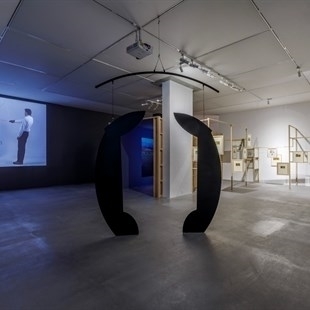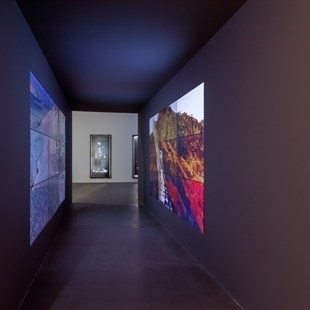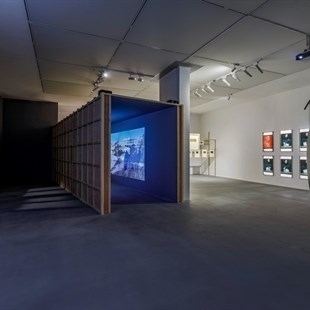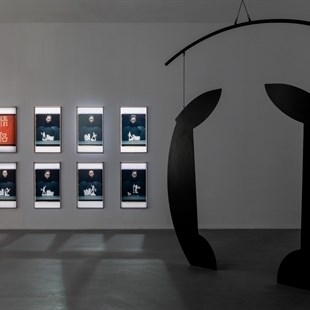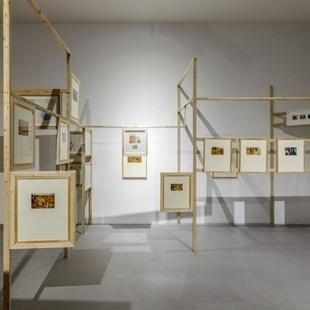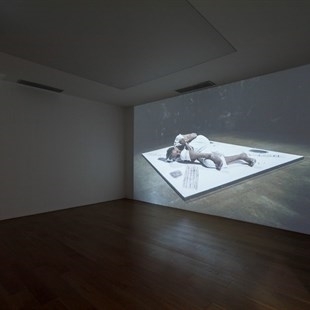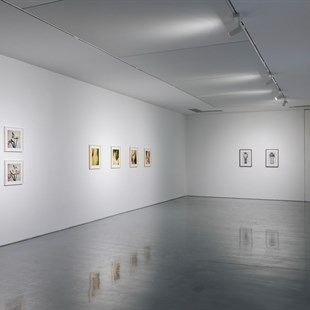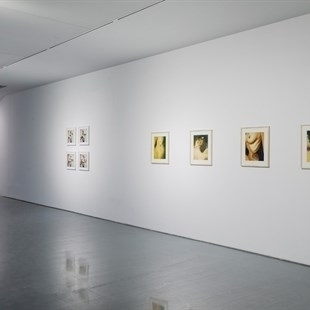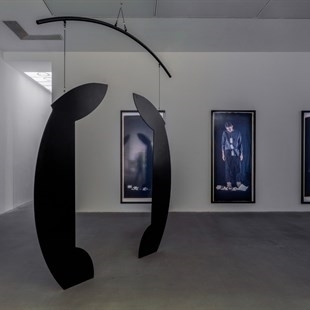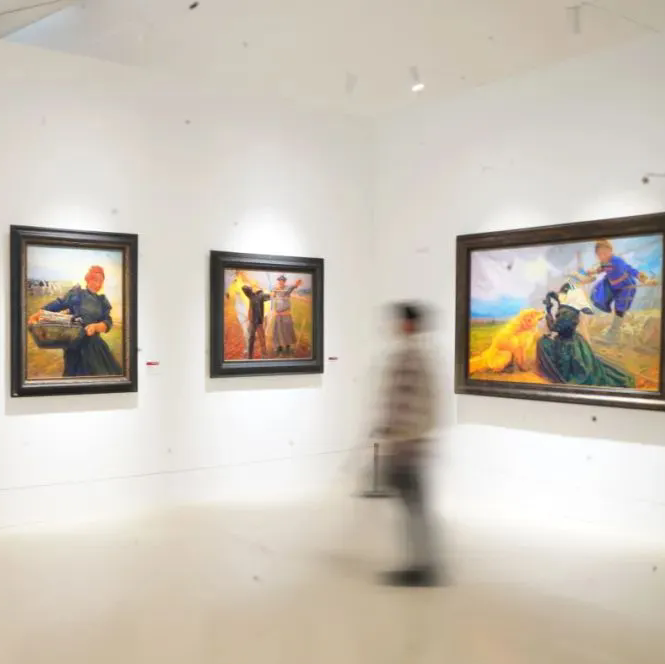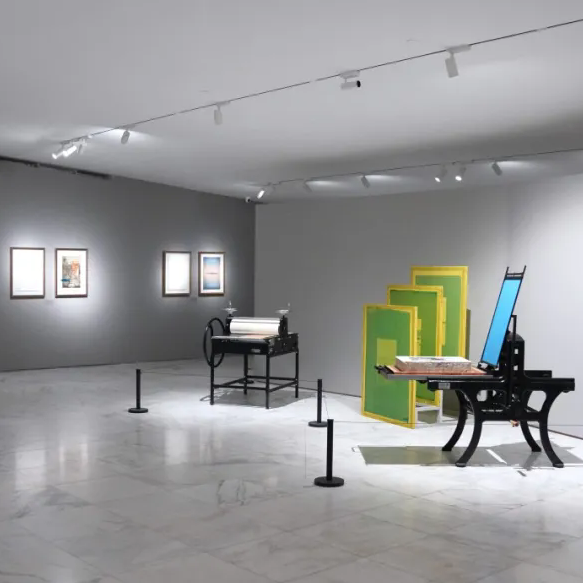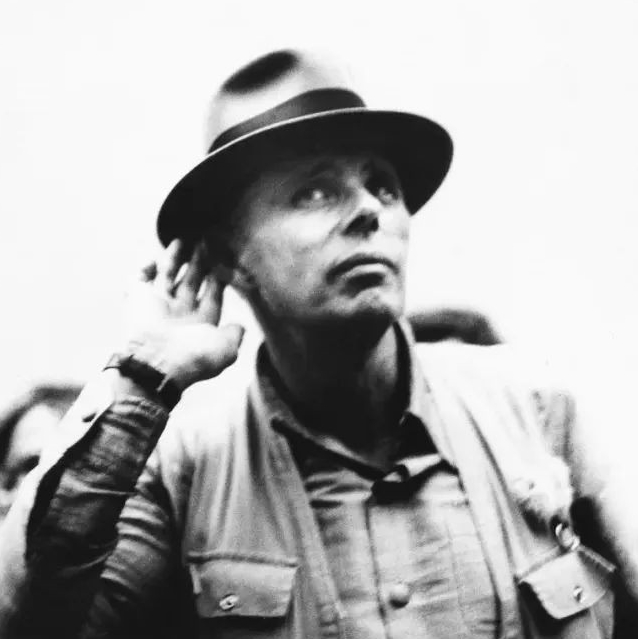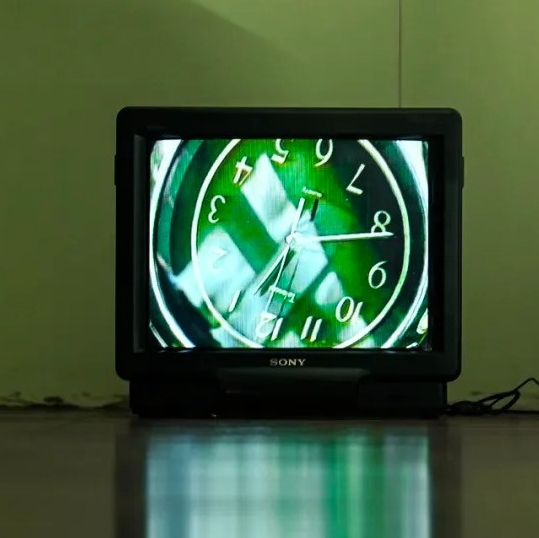SPURS Gallery begins its fall exhibition season with the first official gallery presentation of the iconic artist Ulay (1943–2020), a pioneer in Polaroid photography, performance and body art. Curated by Sherry Lai and Hana Ostan Ožbolt, Ulay: The Great Journey is also the artist’s first solo exhibition in China – a country with which Ulay had a long-lasting and personal relationship and that inspired a great deal of his oeuvre – highlighting various series of works, which were inspired by China’s vastness and greatness, its landscape, culture, religion and people. The exhibition is a journey through Ulay’s life and his body of work, focusing on three different periods: his artistic activity in the early 1970s, his collaboration with Marina Abramović between 1976 and 1989, and his work as a solo artist in the late 1990s.
The body as a reference, as a starting point, as Ulay’s medium par excellence: “As soon as I began using the Polaroid camera, mainly pointing it at myself – a practice I called Auto-Polaroid – I immediately discovered its performative elements. Taking Polaroids was a performative act for me: I performed in front of the camera”.[1] In the early 70s, Ulay developed an approach that was novel in both method and subject matter, using the Polaroid camera as a tool to capture the transformations of his own body, manipulated in a myriad of ways, and investigate the subject of identity (White Mask, 1973; Anagrammatic Aphorism, 1974-75). In those fleeting, intimate performances without an audience, Ulay explored socially constructed issues of gender, his masculine and feminine sides (S’he, 1973-74), as well as photography’s slippery identity between the real and the illusory (Retouching Bruises, 1975).
 Ulay, White Mask, 1973/2022, digital edition on light box after original Auto-Polaroids, 32 x 237 x 8 cm, copyright the artist, image courtesy the ULAY Foundation and SPURS Gallery
Ulay, White Mask, 1973/2022, digital edition on light box after original Auto-Polaroids, 32 x 237 x 8 cm, copyright the artist, image courtesy the ULAY Foundation and SPURS Gallery

Ulay, Anagrammatic Aphorism, 1974-75/2016, color print on Hahnemuhle Baryt Paper, 83 x 43 cm (framed), 64 x 45 cm (photo collage), copyright the artist, image courtesy the ULAY Foundation and SPURS Gallery
 Ulay, S'he, 1973-74/2022, digital edition on light box after original Auto-Polaroids, 130 x 130 x 8 cm x 3, copyright the artist, image courtesy the ULAY Foundation and SPURS Gallery
Ulay, S'he, 1973-74/2022, digital edition on light box after original Auto-Polaroids, 130 x 130 x 8 cm x 3, copyright the artist, image courtesy the ULAY Foundation and SPURS Gallery
 Ulay, Retouching Bruises, 1975/2018, color print on Hahnemuhle Baryt Paper (enlargement after original Polaroid, type 108), 56 x 46 cm (framed), 35 x 25 cm (photo), copyright the artist, image courtesy the ULAY Foundation and SPURS Gallery
Ulay, Retouching Bruises, 1975/2018, color print on Hahnemuhle Baryt Paper (enlargement after original Polaroid, type 108), 56 x 46 cm (framed), 35 x 25 cm (photo), copyright the artist, image courtesy the ULAY Foundation and SPURS Gallery
From 1976 to 1988, Ulay collaborated with former partner Marina Abramović. Their intensely symbiotic relationship in both love and work lasted twelve years. Ulay no longer posed questions about his own masculine and feminine sides but, joint with Abramović, strived towards unification. Together they broke new ground with their pioneering performance art, propelling each other into new, evermore extreme and unexplored realms of emotional discomfort and physical endurance; testing the capabilities of the body and the mind, and questioning perceived masculine and feminine traits. Through their performances, they became indisputable icons of performance art. On display at SPURS Gallery is their iconic performance Rest Energy (1980). Recorded in a studio in Amsterdam, four minutes in duration, Ulay and Abramović hold a bow and an arrow with the weight of their bodies; the arrow pointing right into Abramović’s heart. Two small microphones record their heartbeats and breaths, which are becoming more and more intense as the performance – about complete and total trust – progresses. The highly symbolic Polaroid series Wednesday–Saturday (1987) can be understood as a complementary and associated element of their performative practice, focused on states of consciousness, psychic energy, transcendental meditation and nonverbal communication.

Ulay / Marina Abramović, Rest Energy, 1980, performance for video, 16 mm film transferred to digital video, color, sound, 4 min. 4 sec., copyright the artists, image courtesy Marina Abramović Archives, the ULAY Foundation, LIMA and SPURS Gallery
 Marina Abramović / Ulay, Wednesday–Saturday (Moret of Palm Leaves and Night Sky Shadows), 1987, Polaroid/Polacolor, New York Studio, diptych, 76 x 60 cm(framed), 72 x 56 cm (photo) each, copyright the artists, image courtesy Marina Abramović Archives, the ULAY Foundation, LIMA and SPURS Gallery
Marina Abramović / Ulay, Wednesday–Saturday (Moret of Palm Leaves and Night Sky Shadows), 1987, Polaroid/Polacolor, New York Studio, diptych, 76 x 60 cm(framed), 72 x 56 cm (photo) each, copyright the artists, image courtesy Marina Abramović Archives, the ULAY Foundation, LIMA and SPURS Gallery
In 1986, Ulay and Abramović visited China for the first time. Initially, when the couple planned the trip, they intended to get married at the center of the wall. With a hug, they ended their relationship with the monumental work The Lovers: The Great Wall Walk (1988) in which they walked for ninety days towards each other from either end of the Great Wall – a journey not yet made by any Westerner. After eight years of negotiations with the Chinese authorities and raising funds for the project, the artists got permission to carry out the durational performance: Abramović started walking at the eastern end of the Wall (at Shan Hai Guan, on the shores of the Bohai Sea), walking westward. Ulay started at the western end of the Wall (at Jia Yu Guan, the south-western periphery of the Gobi Desert), walking eastward. While they both continuously walked two thousand kilometres towards each other, they documented their journey: on view are Ulay’s (Polaroid) photographs of the landscape and the people he encountered (China – Along the Great Wall, 1986–1989), as well as his intimate diaries from that time. Inspired by the architecture of the Great Wall itself, a large aluminium gate-like sculpture from 1989, Mén (“door” in Chinese), one of the artist’s very seldom examples of sculptural objects, is also exhibited.
 Marina Abramović / Ulay, The Lovers: The Great Wall Walk, 1988, two-channel video installation, color, silent, 15 min. 41 sec., copyright the artists, image courtesy Marina Abramović Archives, the ULAY Foundation, LIMA and SPURS Gallery
Marina Abramović / Ulay, The Lovers: The Great Wall Walk, 1988, two-channel video installation, color, silent, 15 min. 41 sec., copyright the artists, image courtesy Marina Abramović Archives, the ULAY Foundation, LIMA and SPURS Gallery
 Ulay, China – Along the Great Wall, 1986–1989, original photograph, vintage, 53 x 43 cm (framed), copyright the artist, image courtesy the ULAY Foundation and SPURS Gallery
Ulay, China – Along the Great Wall, 1986–1989, original photograph, vintage, 53 x 43 cm (framed), copyright the artist, image courtesy the ULAY Foundation and SPURS Gallery
 Ulay, China – Along the Great Wall, 1986–1989, original photograph, vintage, 63 x 53 cm (framed), copyright the artist, image courtesy the ULAY Foundation and SPURS GalleryUlay, China – Along the Great Wall, 1986–1989, original photograph, vintage, 63 x 53 cm (framed), copyright the artist, image courtesy the ULAY Foundation and SPURS Gallery
Ulay, China – Along the Great Wall, 1986–1989, original photograph, vintage, 63 x 53 cm (framed), copyright the artist, image courtesy the ULAY Foundation and SPURS GalleryUlay, China – Along the Great Wall, 1986–1989, original photograph, vintage, 63 x 53 cm (framed), copyright the artist, image courtesy the ULAY Foundation and SPURS Gallery
On June 27th, 1988, Abramović and Ulay met at Erlang Mountain, in Shen Mu, Shaanxi province. The Great Wall Walk, initially intended as a confirmation of their love, marked the end of their relationship, one of the most intimately productive and celebrated artistic partnerships of the 20th century.
The Lovers is also the title of the mid-size Polaroid series, Ulay created in 1989. Through a performance of paper figures, the series stages Ulay and Abramović’s Great Wall Walk for the Polaroid camera. Ulay’s wife at the time, Ding Xiaosong, interprets the story by manipulating the paper puppets and adding new layers of references to the performance. The last scene shows Ding setting on fire the paper figures, suggesting the end of their relationship, announcing at the same time a new chapter in Ulay’s life.
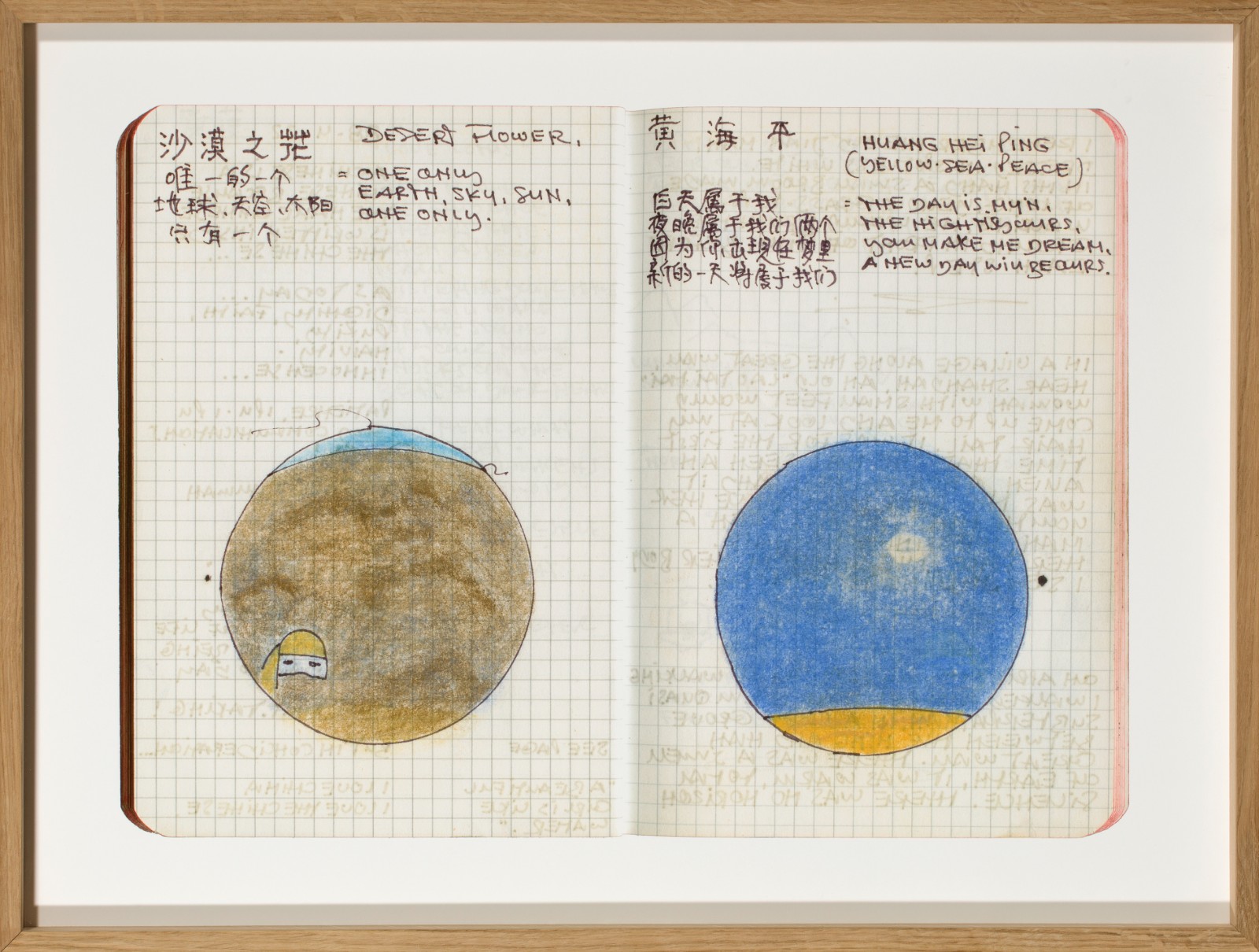
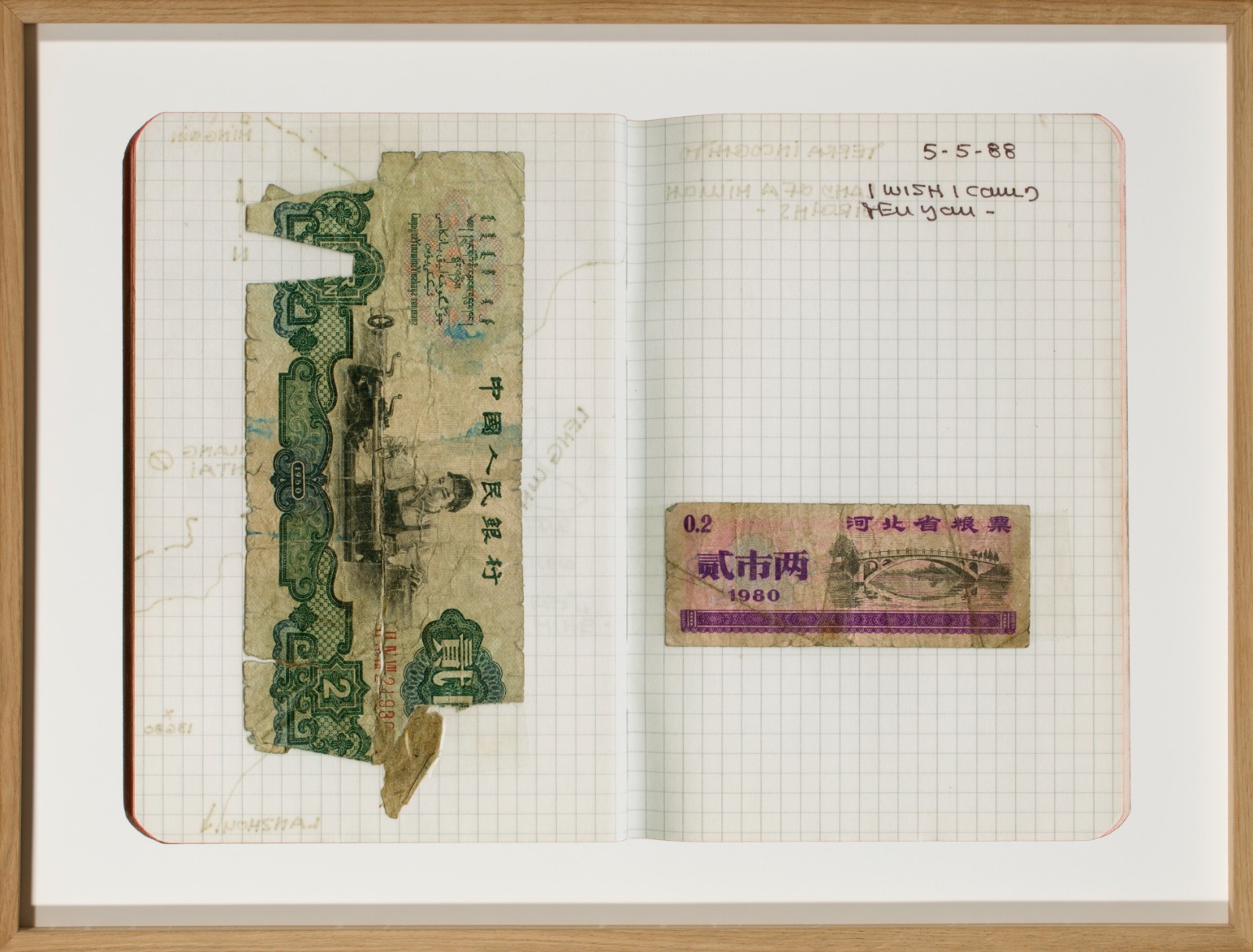
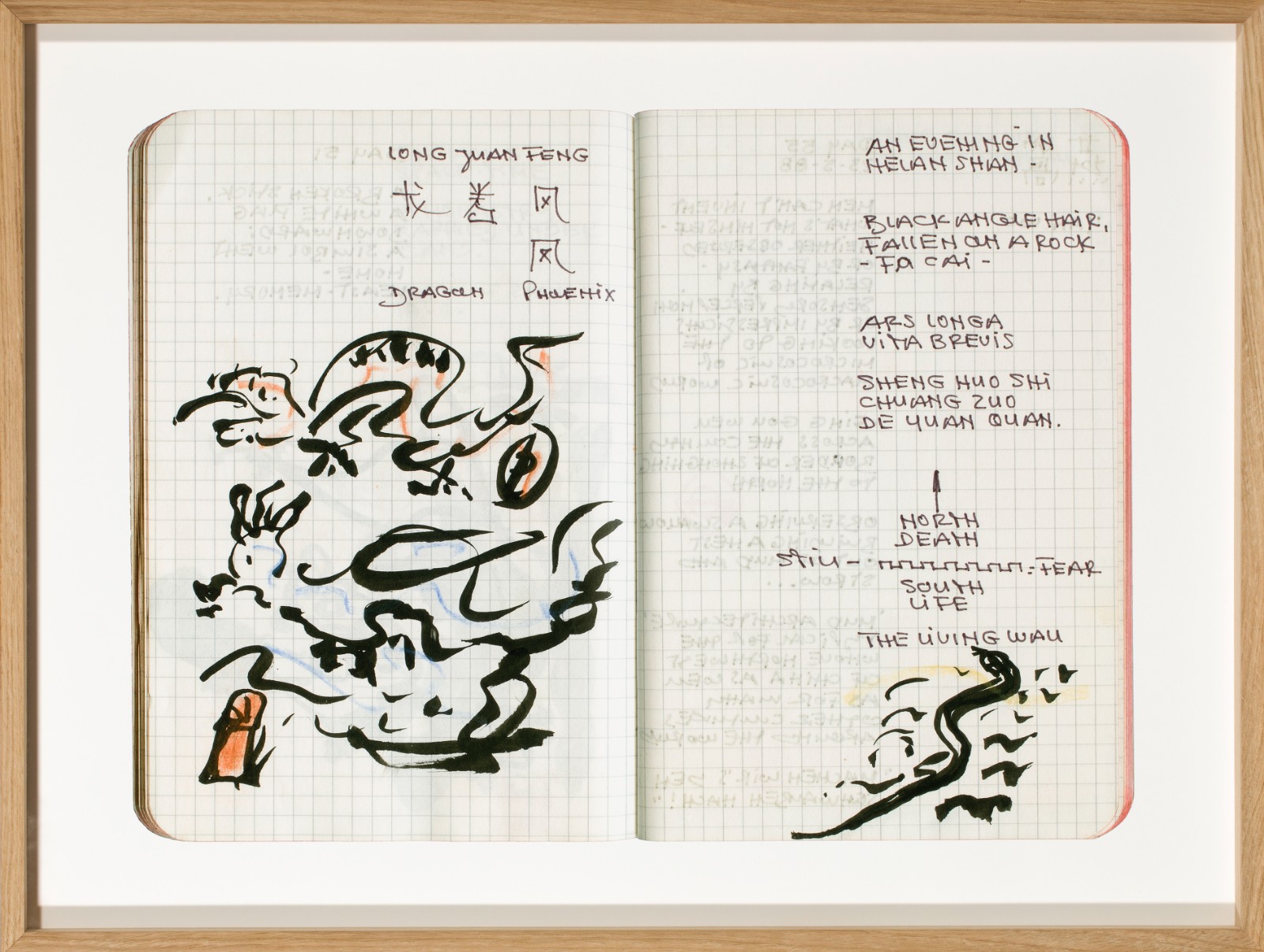
Ulay, Diaries from the Great Wall Walk, 1986–1989/2016, print on paper (enlargement after original physical diary), 47 x 62 cm (framed), copyright the artist, image courtesy the ULAY Foundation and SPURS Gallery
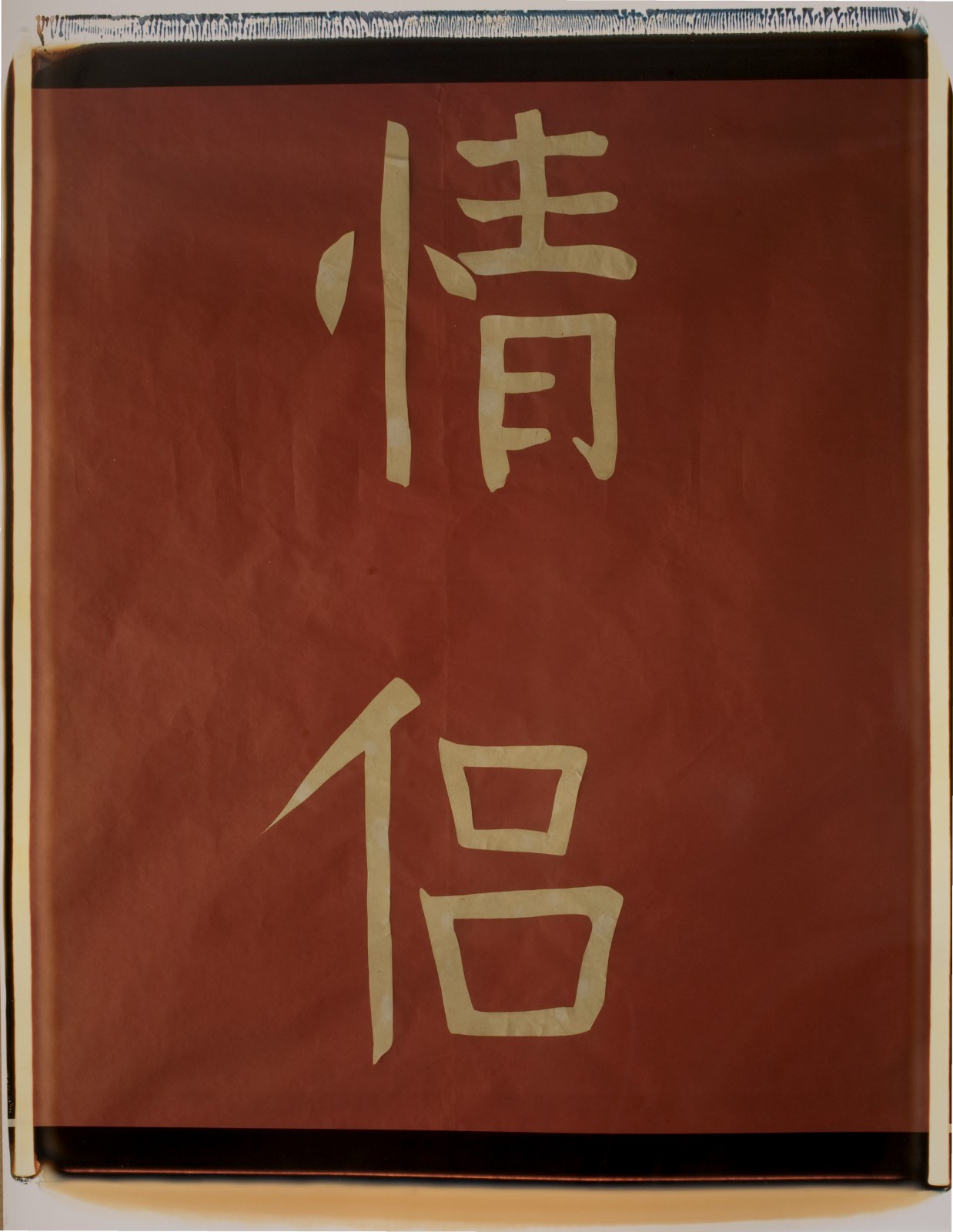 Ulay, The Lovers, 1989, series of 8 Polaroids/Polacolor, Frankfurt Studio, DE, 106 x 66 cm (framed), 70 x 55 cm (photo) each, copyright the artist, image courtesy the ULAY Foundation and SPURS Gallery
Ulay, The Lovers, 1989, series of 8 Polaroids/Polacolor, Frankfurt Studio, DE, 106 x 66 cm (framed), 70 x 55 cm (photo) each, copyright the artist, image courtesy the ULAY Foundation and SPURS Gallery
Radically merging photography and performance and exploring the limits of the medium of Polaroid photography led Ulay to use the larger Polaroid formats, the 20 x 24-inch camera (the series The Lovers, 1989 and Wednesday–Saturday, 1987) and the largest, the 40 x 80-inch camera. Presented at SPURS Gallery are, for the first time, the large-format Polaroids (approx. 240 x 110cm) from the intimate series titled Whispers. Realized under the influence of the European writers Samuel Beckett’s and Emil Cioran’s nihilist literature, the works composing the series represent a statement that reflects Ulay’s inner state while at the same time continuing recurring motifs from his oeuvre: performative auto-portraits, vases as symbols of emptiness and fullness, memento mori, water and seeds as symbols of life. The works, so Ulay about the series, “clearly reflect a certain search”. The works Amarilys (1997), photographed in the mid-90s, continue the search.

Ulay, Self-portrait, from the series Whispers, 1993, Polaroid/Polacolor mounted on aluminioum, Boston Studio, 253 x 121 cm (framed), 244 x 112 cm (photo), copyright the artist, image courtesy the ULAY Foundation and SPURS Gallery
Ulay’s life was marked by various journeys with diverse people and cultures – physical travels all around the world and spiritual explorations of different states of mind. His identity search was a life-long project, closely connected to the process of “unlearning – forgetting the values by which I had justified myself, my commitment”. “What I reached was a lot more fluid and no longer as concrete. (...) I began to see that everything is in constant motion: life is change.”[2]
Notes:
[1] Ulay in an Interview with Alessandro Cassin: “Early Works: Ephermal, Intimate Actions, with No Audience, Arrested in Time through the Polaroid”, pp 88-93. In: Whispers: Ulay on Ulay (by Maria Rus Bojan and Alessandro Cassin, ed. Astrid Vorstermans), Valiz Foundation, Amsterdam, 2014.
[2] Ulay in conversation with Alessandro Cassin: “Animism, Buddhism, Beckett and Cage”, pp. 226–227. In: Whispers: Ulay on Ulay (by Maria Rus Bojan and Alessandro Cassin, ed. Astrid Vorstermans), Valiz Foundation, Amsterdam, 2014.
About the artist
Ulay (November 30, 1943–March 2, 2020) was the pioneer of Polaroid photography, body and performance art.
Born as Frank Uwe Laysiepen in 1943 in Solingen, Germany, Ulay moved to Amsterdam in 1968, where he started his artistic career as a consultant for Polaroid. In the early period of his artistic activity (1968–1976) he undertook a thematic search for understandings of the notions of identity and the body on both the personal and communal levels, mainly through series of Polaroid photographs, aphorisms, visual and concrete poetry, and intimate performances. From 1976 to 1988, Ulay collaborated with former partner Marina Abramović. Their 12-year relationship was one of the most fertile and celebrated artistic partnerships of the 20th century. Through their performances (Relation Works; Modus Vivendi; Nightsea Crossing, The Lovers: The Great Wall Walk), they became indisputable icons of performance art. After breaking with Abramović, Ulay focused on photography, exploring the medium and its boundaries. He also produced constant ‘provocation’ of audiences through the realization of numerous collaborative projects, performances, workshops, and lecture-performances, and engaged in projects and artistic initiatives that raise awareness and enhance understanding and appreciation of – and respect for – water. The period of his late artistic activity between 2014–2017 was marked in both form and content by the colour pink (Ulay’s “pink period”). It consists of a series of drawings, middle-size Polaroids and (collaborative) performances. Ulay died in Ljubljana, Slovenia in March 2020.
Ulay’s work, as well as his collaborative work with Marina Abramović, is featured in major collections of art institutions around the world such as Stedelijk Museum, Amsterdam; Musee Nationale d’Art Moderne – Centre Georges Pompidou, Paris; MoMA. Museum of Modern Art, New York; SFMOMA. San Francisco Museum of Modern Art; Tate Modern, London; Mumok, Vienna.
About the exhibition
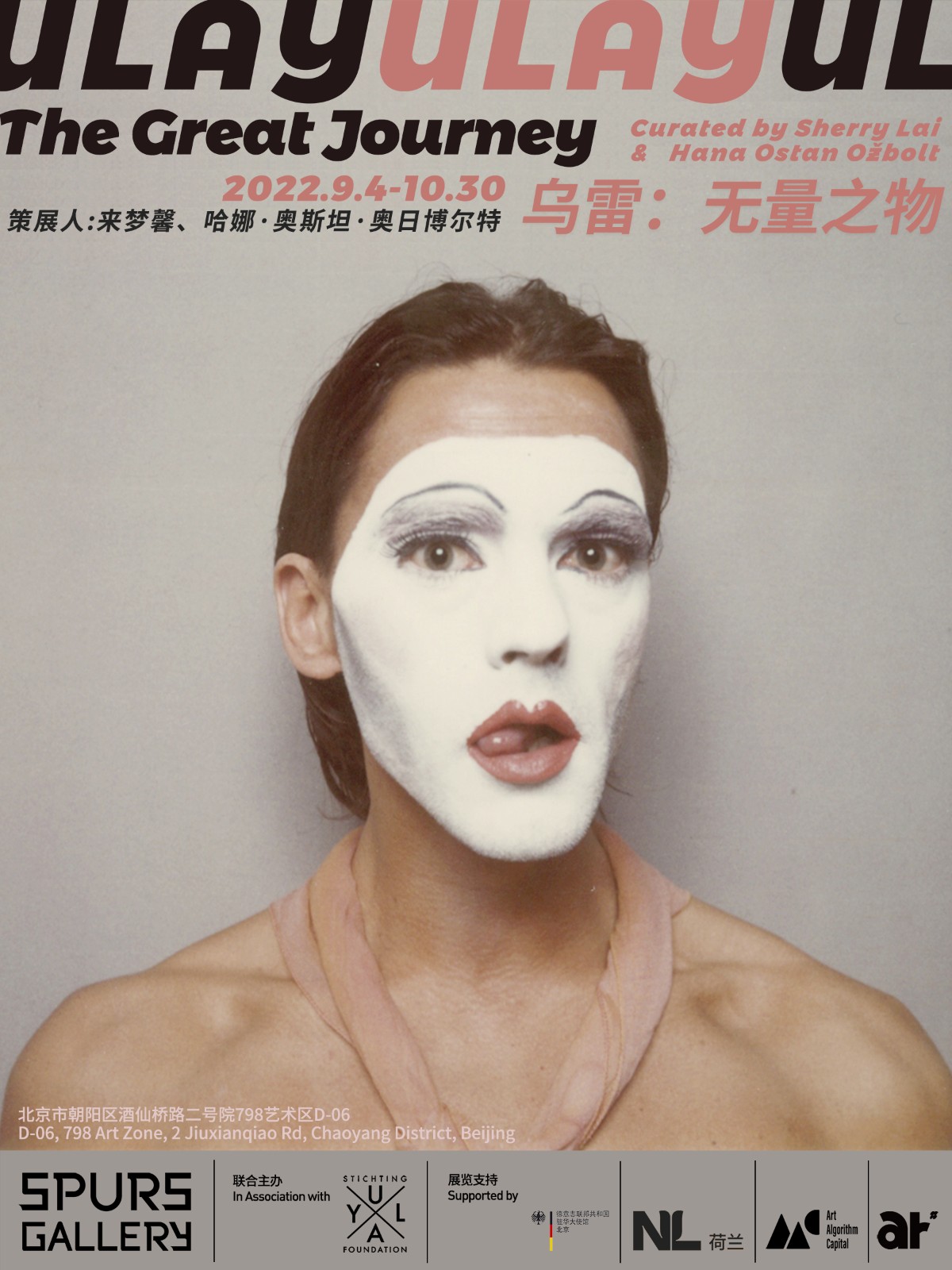 Ulay: The Great Journey
Ulay: The Great Journey
Curators: Sherry Lai and Hana Ostan Ožbolt
September 4—October 30, 2022
Gallery I & II | SPURS Gallery, D-06, 798 Art Zone, 2 Jiuxianqiao Rd, Chaoyang
District, Beijing
Courtesy of SPURS Gallery and ULAY Foundation.


